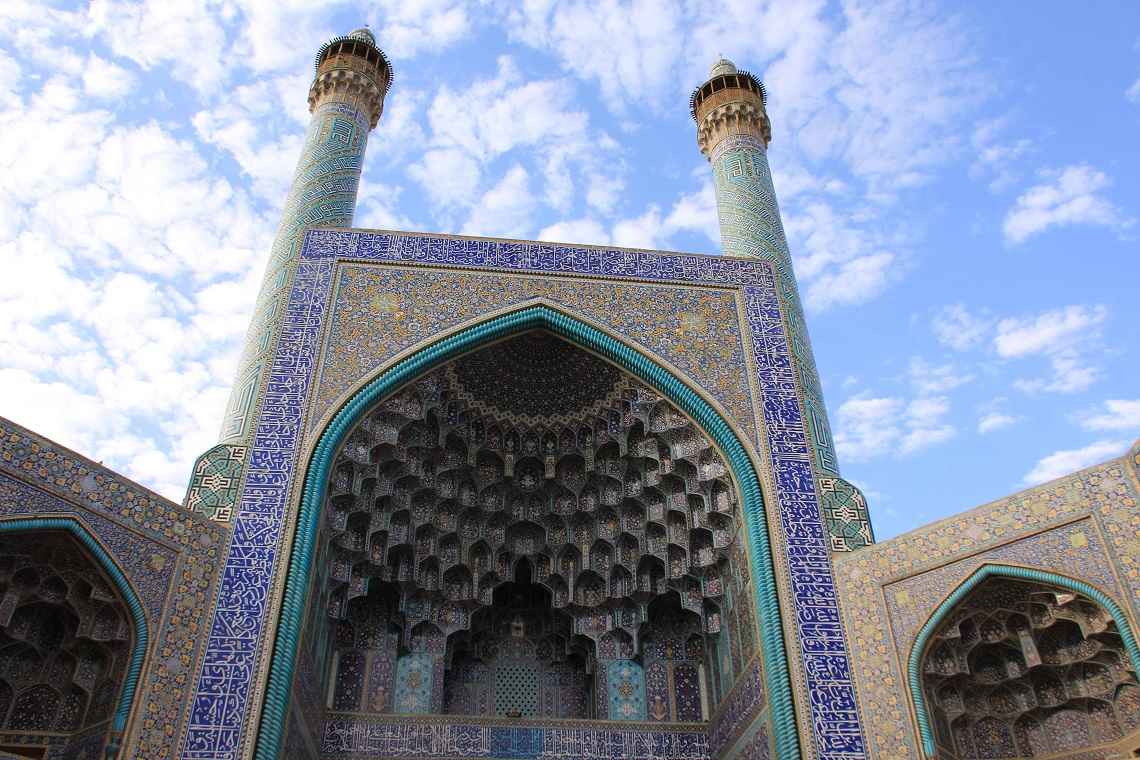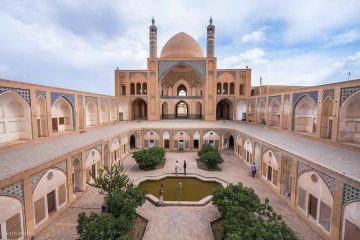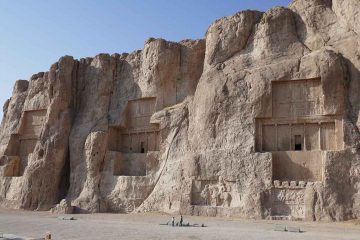A Persian Glow: One Thousand and One Nights
8 days/ 7 nights
“A Persian Glow: One Thousand and One Nights” is the second itinerary of “Calm and Cultural” category that synthesizes two objectives in the same trip. By defining this style, we thought of attending to different needs and cultural tastes. In fact, each itinerary has its own characteristics, making the local culture alive with a particular strategy, created for the lovers of typical landscapes and wonderful cities of Iran. The highlight of this trip is to focus on the coalition between fairytale cities and picturesque landscapes. It offers travelers the opportunity to reflect during the tour and overnight stay in the most splendid cities of Iran.
Duration of trips is usually limited. Sometimes, there is no time for us to sit in a corner of the bazaar to have a coffee and contemplate the urban bustle, to stay in our room and rest, to stroll through popular neighborhoods or upper class areas, and to stand on the dunes of a desert or to stop in front of picturesque mountains to take a deep breath and take pictures. Many times it has happened to us that we had to refuse these whims and leave. The Calm and Cultural style is created precisely to meet these types of needs, although they may seem trivial, but they are precious for their influence on our memories of the trip. In proposing the theme “Calm and Cultural”, we have tried to give as much time as possible to observe the world around us without having the urge to leave or worrying about time. We thought of creating a less intensive and more relaxing itinerary so that we could walk slowly and contemplate the details of faces, cities and landscapes.
This category gives us the possibility of choosing both the type and duration of the trip. All you have to do is to decide on the dates let us know the reason of your trip: relaxation, wedding, wedding anniversary, birthday celebration, engagement, etc. In addition to the most beautiful and fascinating places, our photographer will accompany you in order to photograph unforgettable moments throughout the trip.
What distinguishes this trip to Iran from others is the desire to return immediately to this country. The most striking point of the trip to Iran is undoubtedly the friendliness and hospitality of Iranian people who leave unforgettable memories deep down in the heart of travelers.
| DEPARTURE/RETURN LOCATION | IKA International Airport | ||||
| DEPARTURE TIME | Please arrive at least 2 hours before the flight. | ||||
| INCLUDED |
| ||||
| NOT INCLUDED |
|
1º Day, Country of origin - Tehran
Departure by scheduled flight to the capital of Iran, Tehran, located at the foot of Mount Alborz. Welcome and greetings by SITO TRAVEL’s tour guide at the airport. Transfer to hotel and check-in.
Azadi Hotel or similar hotels.
2º Day, Tehran
Breakfast. The day is dedicated to visit particular places of the Iranian megalopolis. Before we start, it is necessary to know that the Iranian Revolution (1979) is no the beginning of Iran’s history, but rather a milestone. The birth of modern Iran dates back to 1925, when Reza Pahlavi ascended the throne and the Qajar dynasty was deposed. During his ascension to the throne, Reza Shah had the support of the Shiite clergy, but once he came to power, he abandoned his alliance with the clergy and developed various campaigns to modernize and secularize the country. Thanks to oil revenues, the Shah was able to establish a new state based mainly on two pillars: the army and the bureaucracy.
In the morning, we head to the north of the city, a very interesting area to observe the architectural progress of modern Tehran. We will have the opportunity to visit the Niavaran Palace which, in the 60s, hosted the most important politicians of the world. After a lunch break in a typical restaurant in the middle-class district of Tehran, we continue to the lively Tajrish Bazaar and then return to the hotel walking along the beautiful tree-lined Valiasr Street.
- Niavaran Palace: has witnessed many of the events recounted in historical texts including the attempt to modernize ancient Persia, which ended dramatically, due to many fatal mistakes of the Shah. The palace was the last Mohammad Reza Pahlavi’s refuge before he fled the country. Walking through the corridors and rooms of the residence, we will discover the clothes and objects left by the Shah and his family before leaving Iran. This palace represents, briefly, a collection of historical objects telling us a fragment of the modern history of Iran before the Islamic Revolution. Among the exhibits are the pilot certificates of Mohammad Reza Shah’s son, the gifts given to the Shah’s sons, the moon fragment that Nixon gave to the Shah during an official visit, a painting of the queen, Farah Diba, smiling as she watches her son, Reza, in a pilot’s uniform, climbing a tree.
Today, Tehran play a pivotal role in Iran’s modern history as it offers travelers extraordinary sites, bars, parks and recreational areas. Iran’s concern of artistic developments, recent architectural interventions and the revival of many traditional style cafes has made the city a fascinating labyrinth that holds a surprise for visitors at every corner.
- In the afternoon, a pleasant walk across the Tabiat Bridge (Pol-e Tabiat), a modern landmark of the Iranian capital, Tehran. Tabiat Bridge is a pedestrian area, built on one of the main highways of the city connecting two green hills (two public parks). The bridge was designed by a 26-year-old Iranian woman, “Leila Araghian”. Since its inauguration in 2014, it has won many international awards. The designer has expressed that this work has been conducted with the purpose of bringing people together.
Later, we go to one of the cafes frequented by young artists, writers and inhabitants of the megalopolis on another side of the city.
- Niavaran Palace
- Lunch in a typical restaurant in Niavaran
- Tabiat Bridge
- Tehroon Café
3º Day, Tehran- Kashan
Breakfast. Departure to Kashan. The first part of the visit is dedicated to the historical center of Kashan and the second one offers a quiet relaxing afternoon in the desert dunes.
Kashan always represents an exemplary model to learn more about its local culture. In addition to the existence of its millenary hill, Kashan is also known for its 19th century villas, also called bioclimatic houses. It is necessary to know that Kashan has a desert climate and very hot summers. The invention of the city’s inhabitants led to the birth of a house in two or three different levels making easy to cool or heat the rooms depending on the season. The importance of the city is not only based on the variety of houses, but it is mainly known for the production of high quality rose water. In fact, the trip to Iran now takes on its original scent of rose petals grown in the hills of central Iran. This beautiful city, located in a green oasis, still houses some of the most beautiful traditional houses in the area. The stay in Kashan consists of spending a peaceful night in a fairytale place or in 19th century villa that has preserved the bioclimatic criteria adapted to receive guests. Just before leaving for the desert, we will visit the ancient Sultan Amir Ahmad Bathhouse, the Safavid period thermal complex with a hydraulic system and a particular heating system. This thermal complex is divided into three different parts: frigidarium (the place to take cold baths), tepidarium (the room of warm baths) and caldarium (the room of hot bath). What highlights the beauty of this bathhouse is the decoration of the walls and the position of the pools in the first room. Each space was reserved exclusively for a particular social class: the descendants of the Prophet, clerics, nobles, merchants and farmers.
During the trip to Kashan, we will visit one of the most fascinating deserts in central Iran Maranjab Desert (Kavir-e Maranjab) where we can walk barefoot on the sands. Here, our photographer will take pictures at sunset to capture one of the most spectacular moments.
We return to Kashan for a serene night at the hotel.
- Sultan Amir Ahmad Bathhouse
- Maranjab desert
- Dinner and overnight stay at Ameri’s House or Manuchehri’s House.
4º Day, Tehran- Kashan- Isfahan
After breakfast, departure to Isfahan. The highlight of the itinerary is Isfahan. This city is a historical image that completes the journey in Iran. It is no coincidence that Isfahan attracted Pasolini’s attention to shoot some scenes of his film in Naqsh-e Jahan square. There is a Persian saying: “Isfahan is half of the world.” In fact, the flourishing of Islamic-Iranian architecture was born here in Naqsh-e Jahan Square where the turquoise blue dominates the domes of mosques and the sky above. Over time, the former polo field was converted into the home of valuable art workshops. The Safavid era corresponds to the third Persian Empire which restored Iran’s power and established a new country based on political, religious and military relations. The presence of Vank Cathedral (also called St. Savior’s Cathedral), run by the Armenian Christian community since 1605 AD makes a good example of this city. However, the Safavid power was represented through art and thus, a phase of “Renaissance” of Persian civilization, culture and art was born in Isfahan. The Islamic Renaissance period in Iran sees artistic lightning under the rule of the Shah Abbas I (1587-1629).
Visiting Isfahan:
- Royal Square or Naqsh-e Jahan: (the image of the world) located in the center of the city, was redesigned by Shah Abbas I. There are two arches in the large central square of Naqsh-e Jahan (512 by 163 meters). On the southern side, there are many handicraft stores selling miniatures, turquoise work, enamels and traditional fabrics. Naqsh-e Jahan Square was home to an elite of merchants who sought artistic refinement. In the square, there are still the pillars that served to delimit the Polo field built 400 years ago.
In Isfahan, in a matter of seconds, every traveler’s dream of Middle East comes true: Iran and the appeal of the Renaissance, Chehel Sotun Palace and the magnificent ceiling of the Music Palace of Ali Qapu Mansion.
Our day is dedicated to visit the square and walk through the old Chaharbagh Boulevard leading to Si-o-Se Pol (33 Arches Bridge). In Isfahan, as one visit ends, another begins, and the traveler unconsciously prepares to listen to the city’s narratives, as if Scheherazade were reading them directly from “the Arabian Nights”.
Having walked across the ancient bridge, we will have dinner at a traditional restaurant in the historical center of Isfahan to taste typical Persian dishes.
- Naqsh-e Jahan Square
- Chaharbagh Boulevard
- Si-o-Se Pol
- Abbasi Hotel or similar hotels.
5º Day, Tehran- Isfahan
The day starts with a walk in the wonderful Hasht Behesht Garden and then we continue with a visit of Chehel Sotun Palace (40 Columns Palace) is the pavilion where the king held ceremonies. A few steps from the square, another magnificent Persian Garden shines in the courtyard of this palace that embraces one of the delights of the Safavid Renaissance: the pavilion is still alive in the heart of the Persian Garden as if the luxury of real life had never ceased there. In this place, we will see the masterpiece of miniature art which, by admiring the paintings and the stories they tell, open a door of culture and anthropology to familiarize us with the most important characters in the history of the Middle East in the sixteenth and seventeenth centuries.
After lunch at a restaurant in the central area, we return to the hotel for a late check-out and drink at Naqsh-e Jahan Square.
- Hasht Behesht Garden
- Chehel Sotun Palace
- Having a drink in a typical cafes of Naqsh-e Jahan Square.
6º Day, Isfahan
Passing through Isfahan means to be surprised and immersed in the local culture. To get from the Jolfa district to the Jameh Mosque of Isfahan, we have to cross the Zayandehrud which defines the border between the two religious quarters of Isfahan. Crossing the Armenian quarter and entering the very popular district of the Jameh Mosque is one of the most important visits as we can admire the progress of Iranian-Islamic architecture that occurred from the seventh century until 1900. Therefore, it is not wrong to point out that Isfahan Jameh Mosque is the oldest and most complete of its kind in the whole country. Here, details are infinite and spaces are immense. In the 14th century, an exemplary model of altar, called the Oljato mihrab, was born in this mosque. The building has a complex stucco composition consisting of three-dimensional inscriptions blended in floral and geometric carvings. The mosque has two clearly recognizable spaces, even for inexperienced people: the interior and the exterior. The admiration of the monochromatic bricks inside and the turquoise blue outside is unavoidable. The transition from one space to the other allows us to travel back in time, especially when we are under the magnificent Taj al-Moluk dome, considered to be the most beautiful brick dome of Iran.
Those who love to get lost in the alleys and spend time with the people, should know that it is time to enjoy walking among the stores with the scent of perfume and spices as there is a bazaar right at the main entrance of the mosque. After a 40-minute walk, you can reach Naqsh-e Jahan Square. Before following the covered corridors of the bazaar, one can satisfy his curiosity by visiting the synagogues of Isfahan’s Jewish community.
After the visits, we return to the hotel. In the afternoon, we go to the Armenian district of Jolfa. Iran’s multi-ethnicity is a relevant factor in understanding Iran today. While some of today’s nomads have been living in the Iranian plateau for centuries, other ethnic groups such as Turkmens or followers of other religions, such as Christians, came to Iran for geopolitical reasons and recognized Iran’s tolerance towards other ethnicities and religions. One need only think of the particular case of the Armenians who were forced to move to Iran on the orders of Shah Abbas I. In fact, the Armenians of Jolfa region of Armenia, in the 1920s, left their homeland, devastated due to ongoing conflicts between the Ottomans and the Safavids, and after arriving in Isfahan, the Armenian patriarchate began a new socio-religious phase by setting up new headquarters and communities. The Jolfa district of Isfahan welcomed the Armenians, and Shah Abbas I, in a manuscript signed by himself, allowed them to establish new commercial and religious relations, giving them a certain freedom, fully supported by the Safavid court. The Armenians opened an important trade route in the heart of Isfahan, the Safavid capital. The headquarters of the Armenian caliphate was centralized mainly through the publication of new religious texts using the Gutenberg invention in Iran. The beauty of the architecture and the details of the murals in Vank Cathedral surprise any traveler.
The afternoon is dedicated to take a walk in Jolfa district and have a coffee or Iranian tea and for dinner we go to the other side of Jolfa to relax and contemplate other places frequented by young people.
- Jameh Mosque of Isfahan
- Walking through the bazaar to Imam Square
- Stroll through the Jolfa district
- Dinner at a restaurant in the Armenian quarter
7º Day, Isfahan - Natanz - Abyaneh – Tehran
In the late morning, departure to Natanz and then we continue the journey along the Karkas (vulture) Mountains to join an incredible adventure, walking through one of the oldest traditional villages of Iran, Abyaneh, in a valley. This village, with an altitude of more than 2200 meters above sea level, dates back to the Achaemenid era of the 4th century BC. Abyaneh, characterized by the red ochre color of the houses, is surrounded by the ruins of the Sassanid dynasty belonging to the 3rd century A.D. Another characteristic of this village is the rose pattern on the long white scarves of the women. (Depending on the season and the weather this visit can be included or excluded).
As the sun sets and its rays brighten, the route back to Tehran becomes more noticeable, as if the journey to Iran has just started. It is time to pack the suitcase, which returns loaded with excitement, enthusiasm and a lot of culture. Normally, travelers worry about the cost of overloading their luggage, and as the color of the sky darkens, they are thinking about how to arrange souvenirs and gifts; they like to buy everything from pistachios to fabrics and turquoise stones. There is no doubt that everything will fit, except one thing: the hospitality of the people we met in the markets, historical sites and restaurants. This image is engraved in their hearts and is an unforgettable memory that the traveler will carry with him everywhere. Above all, it will be a good incentive for all those who have enjoyed this trip to return to Iran for the second time.
Transfer to Tehran airport, dinner and overnight stay at IBIS hotel.
- Natanz
- Abyaneh
- Tehran IBIS Hotel
8º Day, Tehran- Destination Country
Transfer to Imam Khomeini International Airport (IKA) departing Tehran to destination country.






Tour Reviews
There are no reviews yet.
Leave a Review